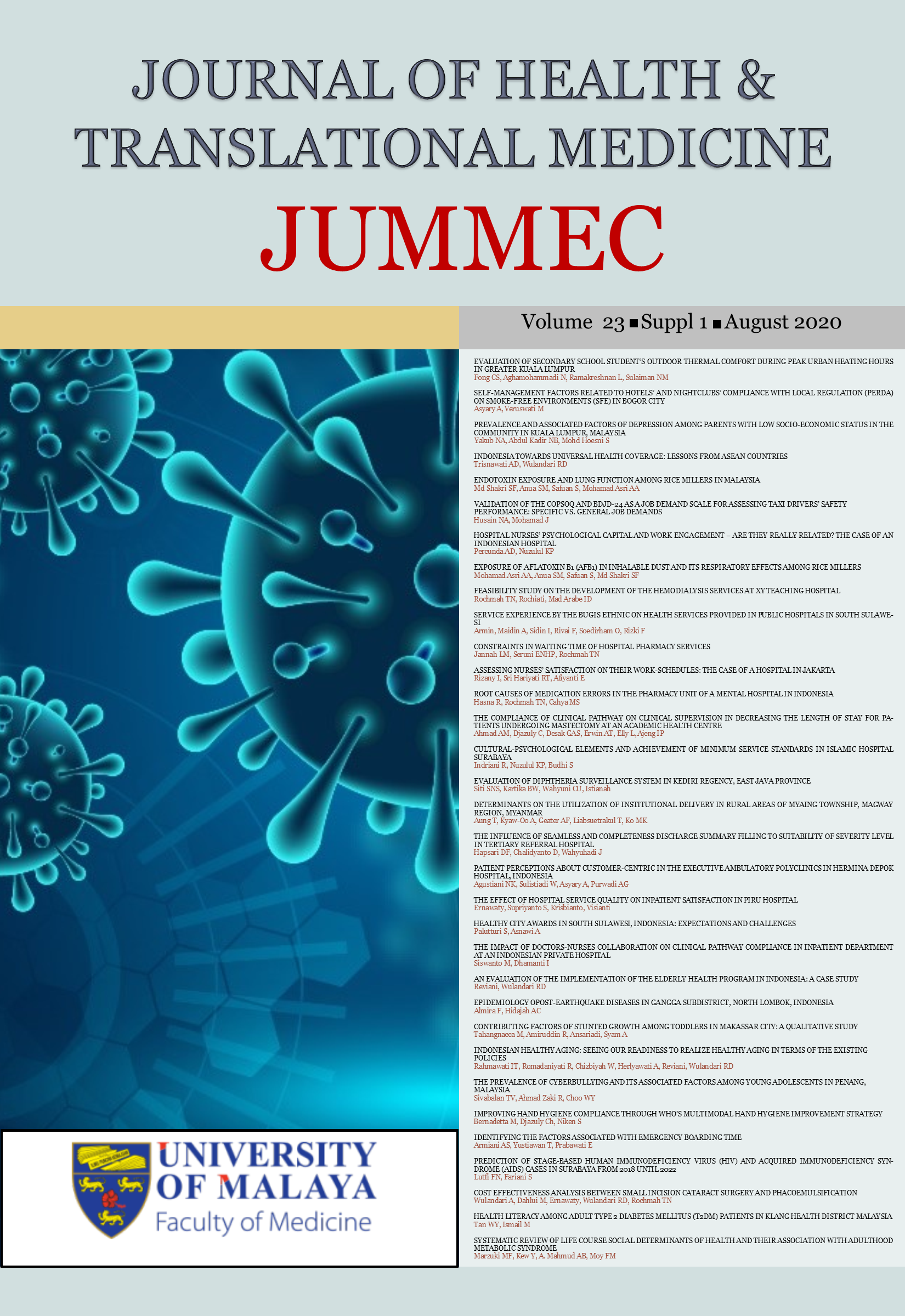PATIENT PERCEPTIONS ABOUT CUSTOMER-CENTRIC IN THE EXECUTIVE AMBULATORY POLYCLINICS IN HERMINA DEPOK HOSPITAL, INDONESIA
Keywords:
Patient-centeredness, Customer-centric, Executive care, Ambulatory, IndonesiaAbstract
Background: Along with a higher demand for better quality services than primary care in hospitals, executive polyclinics also help achieve patient satisfaction. However, the lack of knowledge of patients’ needs as customers will make executive polyclinics operate less optimally.
Objective: This study aims to specify the patients’ perceptions about the customer-centric approach as a patient-centeredness in the executive ambulatory polyclinics of Hermina Depok Hospital in Indonesia.
Material and Methods: A quantitative survey was conducted to explore customer perceptions using structured, valid, and reliable questionnaires.
Results: This study showed that a market requires an executive polyclinic to align with the results of market segmentation in the Hermina Depok Hospital, but the target has not been reached because the majority of patients are unfamiliar with the facilities or advantages of the executive clinic. Among the respondents, 61.5% of the patients think that a customer-centric approach in the executive polyclinic of Hermina Depok Hospital is important, while based on strategy indicators, 77.1% need the help of an officer in completing a procedural stage before an action is taken.
Conclusion: Involving patients in every decision and the stages of the service process until the flow of action is systematic and clear is essential in this approach. Further study is important to determine how to implement or influence marketing mix towards a customer-centric strategy in executive clinics.
Downloads
Downloads
Published
Issue
Section
License
All authors agree that the article, if editorially accepted for publication, shall be licensed under the Creative Commons Attribution License 4.0 to allow others to freely access, copy and use research provided the author is correctly attributed, unless otherwise stated. All articles are available online without charge or other barriers to access. However, anyone wishing to reproduce large quantities of an article (250+) should inform the publisher. Any opinion expressed in the articles are those of the authors and do not reflect that of the University of Malaya, 50603 Kuala Lumpur, Malaysia.


